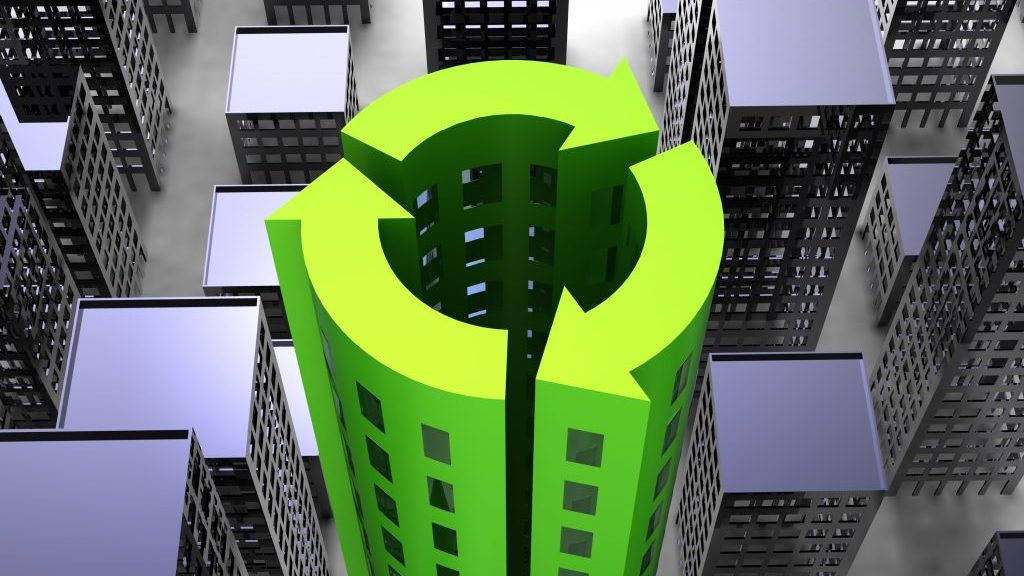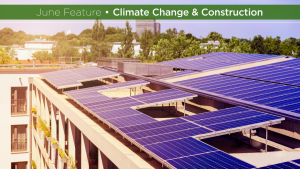Canada’s green building sector will be relied upon heavily to help the nation meet its 2030 Paris Agreement emissions targets, says the Canada Green Building Council (CaGBC) in a recently released report.
It’s a challenge the green builders are certainly capable of meeting, CaGBC vice-president for advocacy Akua Schatz suggests, and one that will transform the sector in the effort.
“Buildings are going to be the foundational cornerstone of our climate strategy,” said Schatz in an interview. “If we’re going to meet our Paris targets, buildings will be instrumental in getting us there, not only because they’re the cheapest way to get there, but they’re the greatest amount of untapped carbon savings that we have.
“And there’s a whole sector that’s ready and experienced to deliver on it.”
The report, released in November and titled Canada’s Green Building Engine: Market Impact and Opportunities in a Critical Decade, suggests that in the best-case scenario, called Climate Forward, Canada’s green building sector can contribute 1.5-million jobs and $150 billion in GDP by 2030 while cutting greenhouse gas emissions (GHG) by 53 megatonnes compared with 2018 levels.
The sector is already booming, the report states, with green building employment spiking 55 per cent between 2014 and 2018, a year in which the sector added 164,000 jobs. Over the same period, in contrast, Canada’s oil and gas extraction, mining and forestry industries contracted by 2.8 per cent. Green building employed 462,000 direct full-time workers in 2018, almost 200,000 more than those sectors.
Ontario led the nation in the green building industry’s economic output in 2018, with 228,000 direct green building industry jobs and a $22.7-billion direct contribution to GDP. Quebec followed and British Columbia was third.
The Delphi Group produced the data and analysis for the report.
Schatz commented just days after the federal government issued the latest iteration of its climate plan in December. The plan contains pledges for an initial $15 billion in investments and reveals that the government will raise the federal carbon tax to over $170 per tonne by 2030.
“What that does is, it just starts to make the business case even better for green buildings, and for decarbonization of buildings,” she said of the carbon tax hike. “It means that those numbers for the Climate Forward scenario are increasingly true.”
Three future policy scenarios were developed by the CaGBC leading to 2030. Pre-COVID and Baseline scenarios would lead to modest growth in achieving GHG reductions while the Climate Forward scenario, which represents activist government policies including a stimulus package such as the federal $10-billion green Growth Plan announced in October, would enable Canada to meet its Paris targets. Schatz said Canada is now on track to achieve those targets.
Under the Climate Forward scenario, the report said, Canada would reduce GHG emissions by 51 per cent in 2030 compared with 2018, a decline equivalent to 53 million tonnes of carbon. Without aggressive efforts, the reductions would be less than half the Climate Forward results.
The report notes new construction represents almost 80 per cent of all green building activity but that retrofitting buildings represents an imperative step as well as a tremendous growth opportunity for the green building sector given the vast, largely inefficient existing building stock.
Strengthened building codes will play a role in Canada reaching its targets, as will an array of public sector green building regulatory and certification programs.
Schatz noted the Quebec government recently introduced a climate strategy that puts buildings at the forefront, and B.C. is also anchoring itself around a clean transition with measures such as its energy step code. The City of Vancouver’s green building requirements are much stronger than the existing building code for the province, she said.
“These are trends that have just been accelerating in the last two years, that are only set to increase. So, it again further shores up evidence that we can be on the path to the Climate Forward scenario.”
There are also ample examples from the private sector of programs and practices that are progressive, Schatz said.
Investors faced with the choice of building to LEED standards or to normal standards now routinely calculate transition risks — asking where they will stand in the future in comparison to a builder across the street facing a similar choice.
“They know in 10 years they are facing a risk of being unable to secure tenants if their property is just meeting the minimum standards,” said Schatz. “So the industry is definitely taking its own initiatives and starting to incorporate climate into their own assessments of risk as well.”
Follow the author on Twitter @DonWall_DCN.











Recent Comments